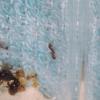Hey everyone. Am I correct in saying this is a lasius claviger (parasitic) queen??
https://imgur.com/a/0IWbVFJ
She's just under 10mm long.
- Formiculture.com
- Forums
- Gallery
- Members
- Member Map
- Chat

0 members, 0 guests, 0 anonymous users